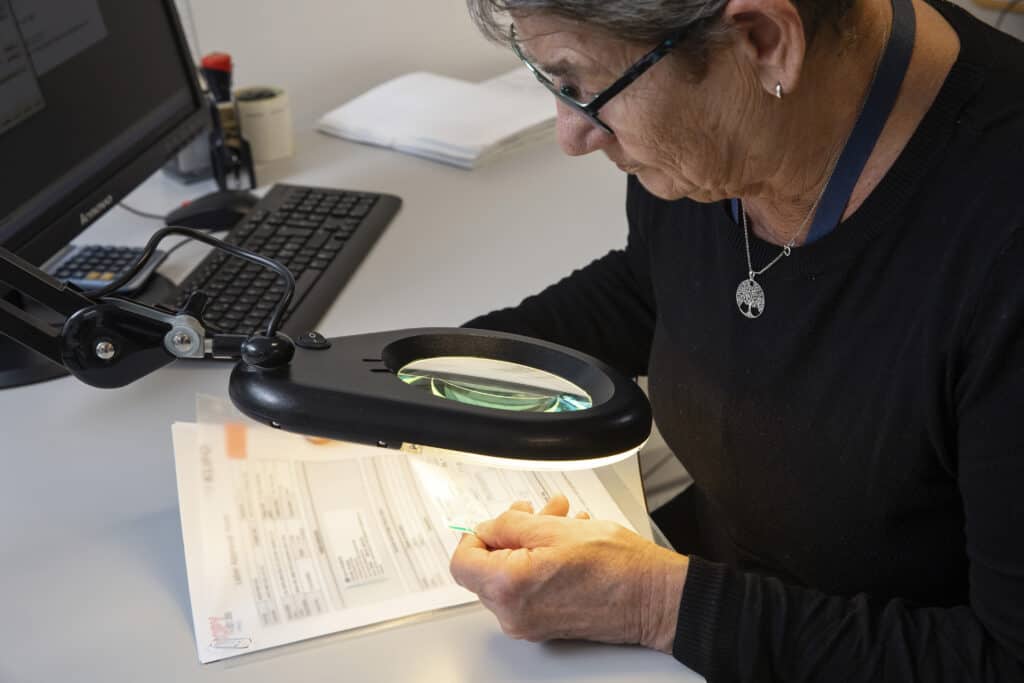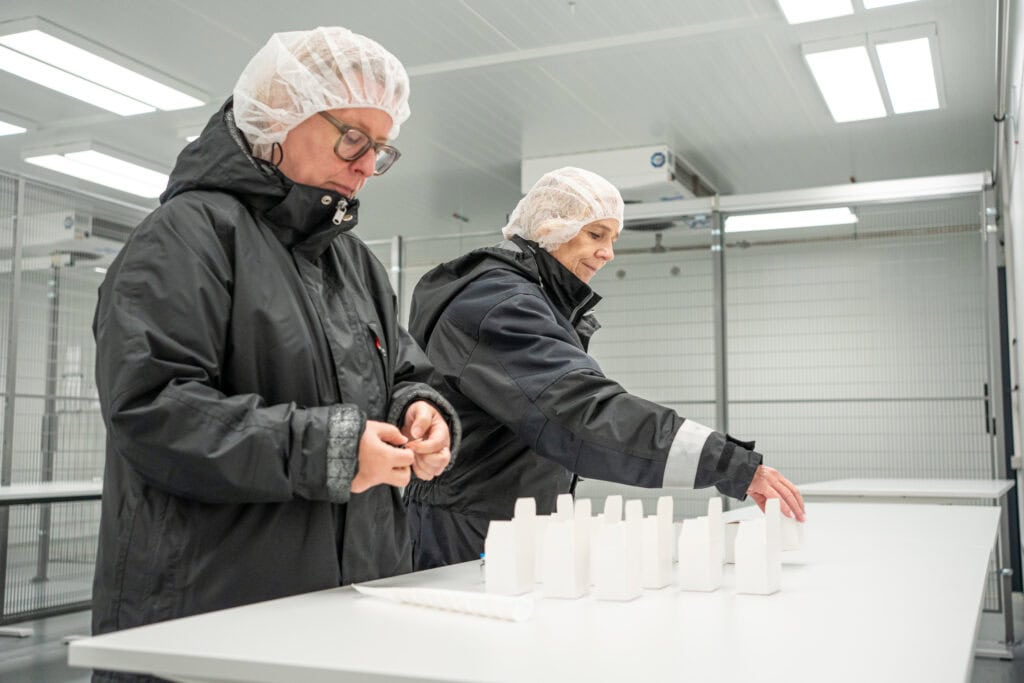Patient Compliant Pack and Label Design
Patient compliant pack and label design for Clinical Trials
Pack and label design is a the most critical part of ensuring the right drug is dispensed to the right patient, reaches them in the right condition and is correctly used by, or administered to, every patient. Patient pack and label pack design is not only about protecting the product; it is about ensuring safety, adherence, and accessibility throughout the treatment journey. With decades of expertise in Clinical Trial Supply (CTS), we deliver packaging and labelling solutions that bring together patient needs, regulatory compliance, and operational excellence.

Why patient-focused packaging matters
Pharmaceutical packaging today is far more than a container. Done right, it becomes a communication tool that:
- Encourages patient compliance.
- Minimises the risk of dosing errors and increases patient safety.
- Is child resistant and senior friendly.
- Strengthens trust in medicines through usability and clarity of information communicated on labels.
- Is designed in a way that supports easy product retrieval at clinical sites.
By shaping pack and labels designs around clinical site and patient needs, we ensure that clinical trial materials are not only compliant, but also genuinely patient-friendly.

Regulatory compliance and guidelines
At KLIFO, we ensure that every pack and label design is:
- Fully aligned with global regulatory standards.
- Developed and reviewed in collaboration with Qualified Persons (QPs) and regulatory experts.
- Follows our patient-centric ethos. For example, while it is possible to reduce font size to fit more text on a label, we need to consider the impact this could have on an elderly, visually impaired patient and whether superior alternative designs are possible.
- Pack design needs to help ensure accurate product retrieval and dispensing at clinical sites. For example, basing label placement on how packs will be stored is essential to accurate and efficient retrieval at clinical sites.
With our regulatory maturity and insights based on experience across 1000s of projects, we bridge the gap between design innovation and compliance, ensuring clinical supplies are optimised for the Sponsor, clinical sites and patients.

Trial-specific solutions
Every trial is different, and packaging must reflect that. KLIFO achieves the best balance between standardisation and customisation by:
- Maintaining a library/inventory of standard solutions allowing us to shorten lead times and reduce costs across trials where a standardised solution will work.
- Applying patient- and site-centric thinking to our label and pack designs.
- Providing custom designs where driven by the specifics of each protocol.
- Strong network of audited/approved suppliers of packaging components and labels helps broaden the depth of expertise in the design process.

Patient pack AND LABEL DESIGN
Sustainability in patient pack and label design
We know sustainability matters. KLIFO’s approach includes:
- Multi-lingual labels maximise supply flexibility and minimise waste.
- Minimising pack size helps avoid ‘shipping air’, allowing smaller and fewer re-usable shippers to be used over the course of a project.
- Advising clients on the potential environmental impact of ‘nice to have’ designs (e.g. packing drug and ancillaries in the same temperature controlled kit)
- Energy-efficient facilities that lower carbon footprint.
- Eco-friendly packaging materials that comply with pharma standards.
This way, we help clients meet their ESG goals while maintaining uncompromised quality and safety.
Guidance through every phase
KLIFO designs packs and labels with a view across the entire supply chain. While our initial focus is on regulatory compliance, we also consider factors such as usability by patients and clinical sites, and the impact of our designs on the cost, efficiency and environmental impact of downstream processes such as storage in depots and sites, distribution, and dispensing to patients.


Why choose KLIFO for patient pack and label design?
When you partner with KLIFO, you get more than a supplier. You gain a trusted partner who:
- Brings 20+ years of CTS expertise and senior regulatory insight.
- Combines patient-centric design with end-to-end supply chain solutions.
- Delivers with speed and flexibility, even under changing protocols and timelines.
- Embeds quality and compliance at every stage.
- Supports your sustainability ambitions without compromising trial delivery.
We bridge the gap between innovative packaging design, regulatory requirements, and patient needs – ensuring your medicines reach patients safely, effectively, and on time.
What is patient-centric pack and label design?
For drugs to be effective, it is critical that they are used as intended. This needs clear, readable, easy to access label text. While this can be challenging for clinical supplies, in which a large amount of information needs to be presented in a small area, there are actions we can take in CTS to address this challenge. For example, use of a ‘flagged’ label design can expand the area available for text, allowing larger font sizes to be used. Also, rather than overcoming the lack of space challenge by reducing all text to the minimum allowed, reducing text that isn’t important to patients (e.g. Sponsor name), while maintain patient-critical text (e.g. dosing instructions, storage conditions) is a more patient centric approach.
How can pack and label design support clinical site staff?
KLIFO is committed to designing packaging that makes it easier for clinical trial sites to select specific kits as directed by platforms such as IRT. When designing a pack, it is often tempting to place labels on the largest available surface. This allows for larger labels and more readable label text…but depending on how kits or stored at site, may make it more difficult for sites to locate specific kits. Use of supplementary labels, or labels covering more than one face on a kit can help address this. For example, if labelling wallet/blister cards, is it possible to extend labels so Kit ID numbers are also visible on the spine of the wallet?
Does KLIFO ensure regulatory compliance for packaging?
Yes. Our label design, regulatory and QP experts make sure all packaging and labelling meet EU and global regulations. When KLIFO develops master label text for our customers, this is always subject to review by our QP. Also, if labels are translated by a third party, regulatory review of translated text to ensure it includes any additional mandatory text required by each country, is also performed.
KLIFO’s SOPs outlines measures we take to stay up to date with changes to the regulations in countries where we support clinical trials, ensuring we are compliant with the most recent version of regulations that apply to our work.
My product has variable dosing, and requires 1-4 vials per dose depending on patient weight and assigned dose level. How should I pack this?
The most common approach we use is to package in uniquely numbered single vial cartons. If an IRT is being used for the trial, this can be configured to automatically order multiple single vial packs depending on patient weight. Packaging based on the maximum dose would result in waste of drug from part-used packs. We are occasionally challenged on this approach – ‘But won’t the extra cartons and labels required by this strategy increase our packaging costs?’ While this is the case, once we explain the value of drug saved by avoiding waste due to part-used packs, clients understand our rationale.
How does KLIFO address sustainability in pack and label design?
While use of recyclable or recycled packaging materials can deliver the greatest results, we feel we can achieve even more through viewing how pack design impacts on downstream activities. Examples are described below.
Producing fewer packs, and ordering less material, by reducing overage through the use of forecasting and/or demand led packaging strategies can have a significant impact on the environmental impact of CTS.
Minimizing pack size maximizes the number of packs we can fit into standard temperature-controlled shippers, which in turn reduces the number of shippers we use across a project, which in turn reduces the space requirements with transportation providers reducing the overall impact of our work on the environment.
A lack of storage space at clinical sites can also create a need for smaller, more frequent shipments which can increase the caron footprint of the clinical trials.

